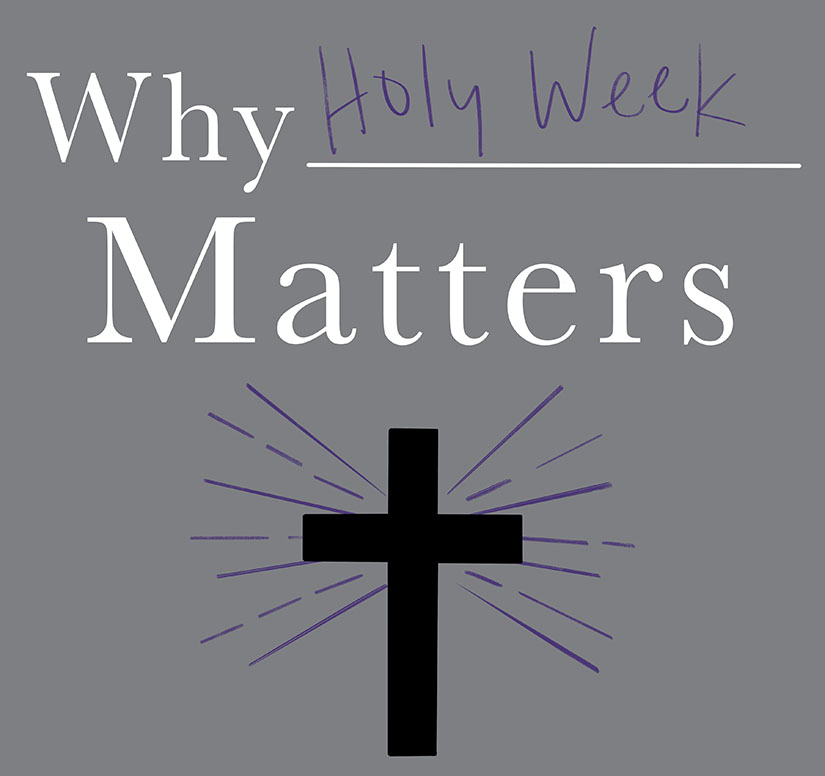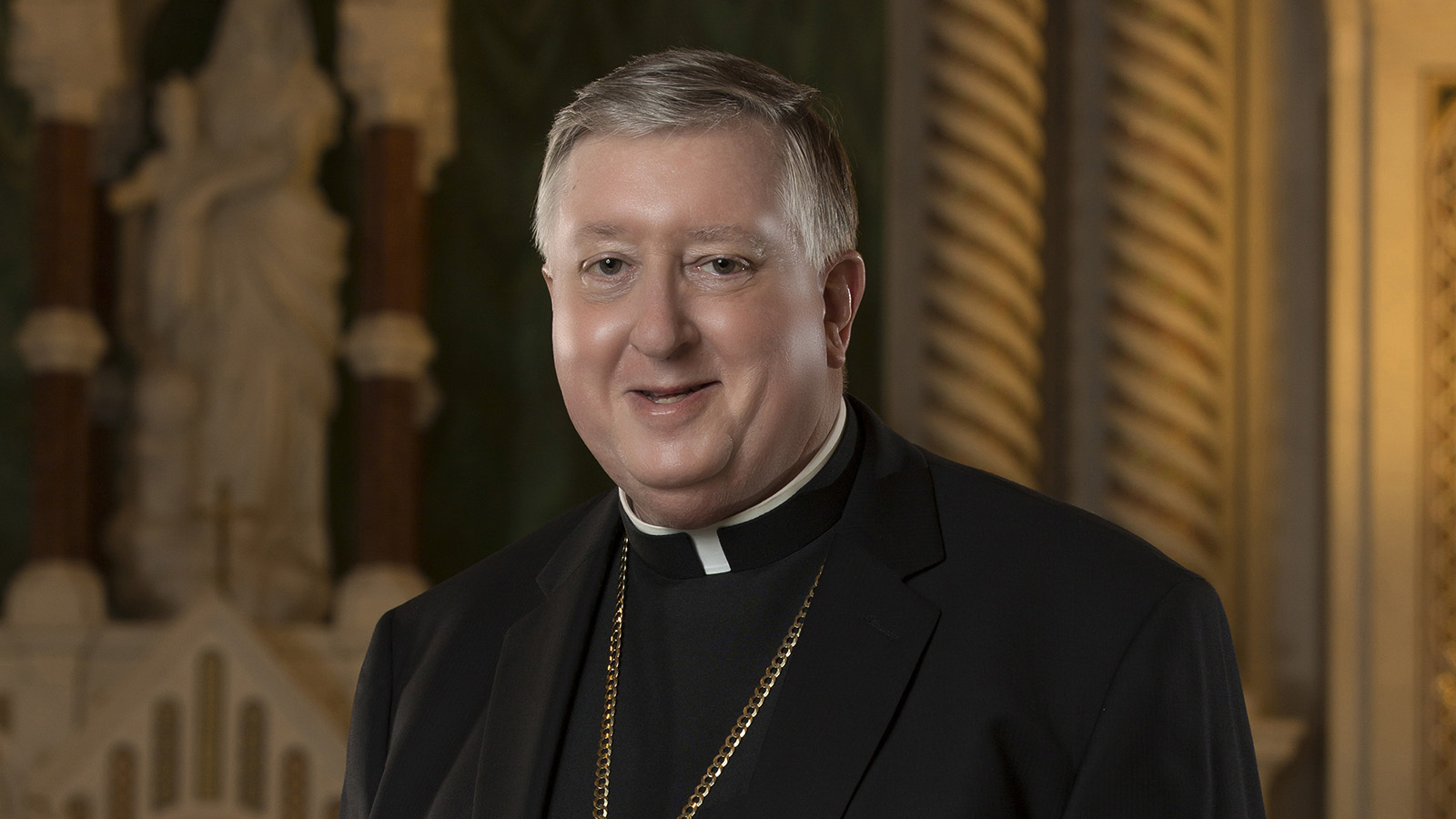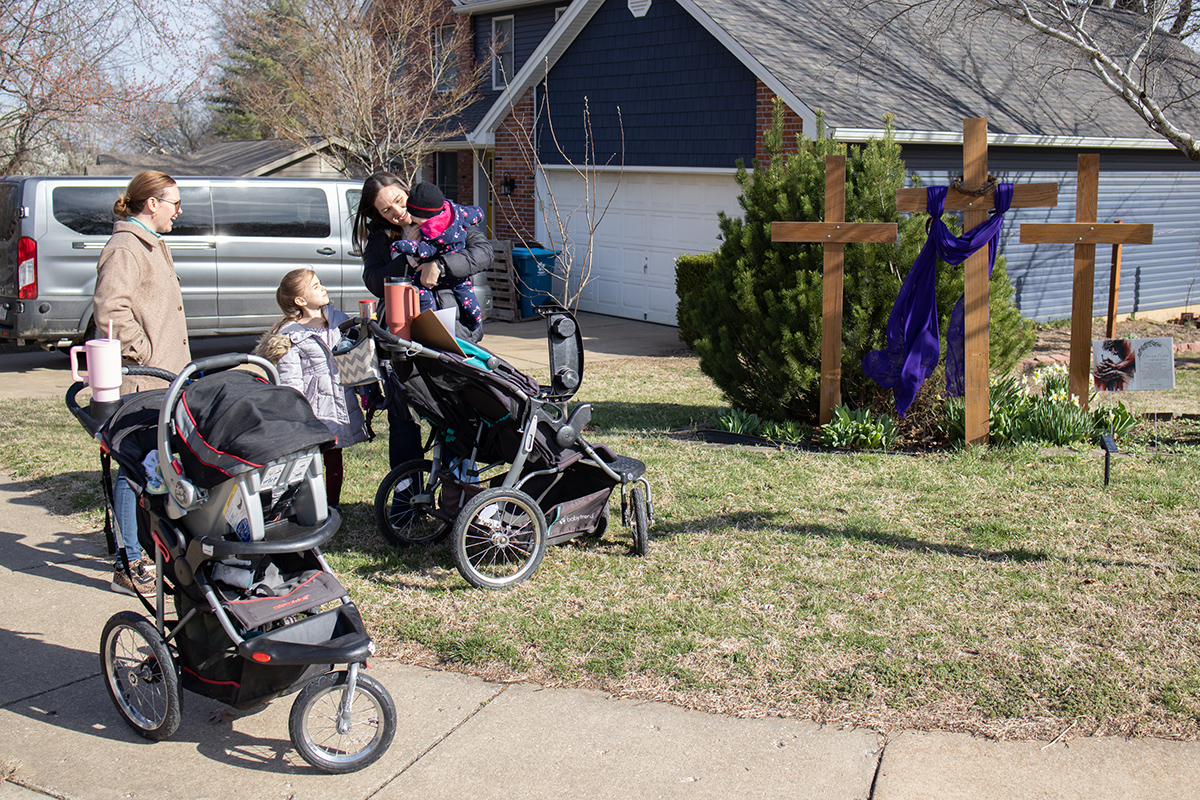Why Holy Week Matters

During Holy Week, we walk alongside Jesus through the central mystery of our faith
The Catholic faith is anchored in Holy Week.
Without Jesus’ Passion, death and resurrection — the central mystery of our faith — we would not have a path to eternal life.
“The Church has always considered the celebration of Easter as the most important,” said Father Donald Anstoetter, director of worship and assistant professor of sacramental-liturgical theology at Kenrick-Glennon Seminary in Shrewsbury. “We celebrate it every Sunday, but every year, we celebrate it in a very special way during Holy Week.”
To arrive at the joy of Easter, we must first travel through the suffering that preceded it. Holy Week begins with Palm Sunday and continues through the Triduum of Holy Thursday, Good Friday and Holy Saturday.
“As we get closer to the day of Easter, the whole Church slows down,” Father Anstoetter said. “We almost are walking through the events of Jesus’ life in real time.”
Walking with Jesus through these most important days allows us to draw nearer to Him as we reflect on His infinite love and mercy.
“As we all fall more in love with Jesus, as we’re all called to do, it only makes sense that we’re going to want to be there to celebrate the commemoration of some of the most important moments of His life,” Father Anstoetter said. “On another level, these are the most important celebrations of the Church year — they are the most solemn, the most unique. The beauty, the reverence and the prayerfulness can all draw us closer into our relationship with Jesus. These are the most significant moments for Him, so why shouldn’t they be the most significant moments for us as well?”
Apart from the special liturgies observed during Holy Week, adopting some extra practices into your own family life can help drive home the unique importance of these holy days.
“I think it’s so important to make the faith a living thing, not just a thing of the past,” said Anne Dittmer, a parishioner at St. Francis de Sales Oratory. “Even though these things occurred thousands of years ago, we can still unite ourselves with Christ’s suffering and do everything we can to commemorate what happened.”
Dittmer, the oldest of six children who is now married and expecting her first child in September, said that her family’s Holy Week observances at home, like a special dinner on Holy Thursday and fasting from entertainment on Good Friday, helped shape her understanding of the events of the Triduum.
“(These practices) make it a totally different week from the rest of the year,” she said. “And it really makes us appreciate Easter even more.”
Palm Sunday

Holy Week begins with Palm Sunday, when Jesus entered Jerusalem, the beginning of His journey to the cross and a fulfillment of the Old Testament prophets. The tradition of blessing palms at Mass stems from the New Testament account of people placing palms in Jesus’ path, singing hosannas, as He arrived in Jerusalem.
Although Palm Sunday Mass begins with a joyful procession, it quickly turns toward the solemnity of the upcoming week with the Gospel reading of the Passion.
“The character of Holy Week is a mix of human emotions where we have these great, joyful moments like the triumphal entrance of Jesus into Jerusalem,” Father Anstoetter said. “We have Jesus at the Last Supper giving us the Eucharist — what greater gift is there? — and instituting the priesthood. These are moments of real joy, but they are always counterbalanced by the looming reality of Jesus proceeding toward the crucifixion.”
Liturgical living: Use your blessed palm fronds to make a cross and hang it in a prominent place in your home. Leave it up through the year until the following Lent, when the palms should be returned to your parish to be burned into ashes for Ash Wednesday.
Holy Thursday

The season of Lent ends on Holy Thursday, when we enter into the Triduum, the three days in which we relive Christ’s Paschal Mystery — His suffering, death and resurrection.
On Holy Thursday morning, the Church traditionally celebrates the Chrism Mass. The priests of the archdiocese gather with the archbishop to bless the three oils that are used for the administration of the sacraments throughout the year: the oil of catechumens, the oil of the infirm and holy chrism.
The blessing of the holy oils emphasizes the connection to the institution of the priesthood by Jesus at the Last Supper, celebrated that evening. At the Mass of the Lord’s Supper, we also celebrate the institution of the Eucharist, where Jesus for the first time gave His true body and blood for the apostles to eat and drink.
The Mass of the Lord’s Supper — and the other liturgies of the Triduum — include some rituals only found in the celebrations of those specific events, such as the washing of the feet on Holy Thursday.
“The most important liturgical feasts preserve the most ancient traditions of the liturgy,” Father Anstoetter said. “Holy Week is so special that we do these things that only can appear once a year. That gives them more impact; it expresses more deeply their importance in expressing the Paschal Mystery.”
At the end of the Mass of the Lord’s Supper, nearly everything is removed from the altar and sanctuary, including any linens, candles and statues. The tabernacle also is emptied, with the door left open — a reflection of the emptiness of the world without Christ.
The altar of repose is used to reserve the Eucharist that was consecrated during the Mass of the Lord’s Supper. The altar is separate from the main altar of a church. The reserved Eucharist is used for the liturgy on Good Friday. Mass is not celebrated between the time of Jesus’ death and resurrection, which is why Communion hosts may not be consecrated on Good Friday.
Liturgical living: Prepare and share a dinner with foods similar to the Passover meal Jesus might have enjoyed with His friends — lamb, unleavened bread, bitter herbs (try them on potatoes or roasted vegetables). “Every moment can be a teaching moment,” Dittmer said. “We explain to the kids that we’re having this food as a commemoration of what Jesus might have eaten at the Last Supper.”
Join in the tradition of visiting the altars of repose at seven churches on Holy Thursday evening. Pick any seven churches in your area, and at each church, take a few minutes to pray before the Blessed Sacrament, placing yourself in the presence of our Lord in the Garden of Gethsemane.
Good Friday

On Good Friday, we mark the end of Jesus’ Passion, culminating in His crucifixion. This is the only day of the liturgical year where Mass is not celebrated. Instead, Good Friday services use the reserved Eucharist from Holy Thursday Mass. Services typically include the reading of the Passion and the veneration of the cross.
Good Friday is a solemn day of both fasting and abstinence. Tradition holds that Jesus was on the cross from noon to 3 p.m., and many observe that time in silence or pause at the 3 p.m. hour to remember the time of Jesus’ death.
Even as we unite ourselves to the intense suffering of Jesus with His mother at the foot of the cross, we know that the crucifixion serves as the path to the resurrection and our redemption. As Venerable Fulton Sheen wrote in his book “Life of Christ,” “Unless there is Good Friday in your life, there can be no Easter Sunday.”
The Catechism of the Catholic Church explains, “Christ’s death is both the Paschal sacrifice that accomplishes the definitive redemption of men, through ‘the Lamb of God, who takes away the sin of the world,’ and the sacrifice of the New Covenant, which restores man to communion with God by reconciling him to God through the ‘blood of the covenant, which was poured out for many for the forgiveness of sins’” (CCC 613).
Liturgical living: Fast from your phone, non-religious music and movies, or even electricity during the noon-3 p.m. hours, commemorating the time of darkness that fell over the earth while Jesus hung on the cross. “It really helps keep your focus on what is going on in the liturgical calendar that day,” Dittmer said. “When you remove those things, you can’t help but remember that this is Good Friday.”
Attend Stations of the Cross at your parish or pray them on your own. Reflections from St. Francis of Assisi accompanied by photos taken at St. Margaret of Scotland Parish can be found at https://youtu.be/apR3v7EYnuo.
Holy Saturday

Holy Saturday begins with the silence of Jesus in the tomb before the evening Easter Vigil Mass, the joyful culmination of Holy Week celebrating the Lord’s resurrection. After walking with Jesus through his suffering, Passion and death, we reach the empty tomb — Jesus is alive!
The triumphant songs of the Easter Vigil — the Exsultet and the Great Alleluia — proclaim Christ’s victory over sin and death. The Easter Vigil also marks the culmination of RCIA, a process of conversion and study in the Catholic faith for catechumens, those who have never been baptized, and for candidates, who were baptized in another Christian denomination and want to come into full communion with the Catholic Church. The paschal candle is blessed at the Easter Vigil and serves as a symbol of Christ, light of the world.
We understand Jesus’ Passion and death through the lens of hope that His resurrection assures. But every piece of God’s salvific plan — including the suffering, undertaken out of love for us — matters.
“It’s the Paschal Mystery — all the joy, all the victory always passes through the darkness, the sin and death, to arrive at the joy of Easter,” Father Anstoetter said. “We know the final destination is all joy. It’s all the resurrection, it’s all life, it’s all light. But to get there, we pass through darkness and pass through sin and suffering.”
Liturgical living: Recall the quiet of Jesus in the tomb by saving Easter celebrations, like egg hunts and decadent meals, for after the Easter Vigil or Easter Sunday.
After the evening Easter Vigil, celebrate! Sing “alleluia” and enjoy a special treat or gathering, whether that be breaking into the Easter chocolate or hosting a post-vigil barbecue for your family and friends. Our fasting is over, and the joy of the resurrection is here.
>> Walking Stations of the Cross in Old Town Florissant

Catholics in Old Town Florissant are offering a chance to walk the Stations of the Cross on Good Friday.
Jessica Berchtold, a parishioner at Sacred Heart Parish in Florissant, started the event in 2020 as a way to prayerfully mark the day with her parish and neighborhood community while churches were closed due to the COVID-19 pandemic. Now in its third year, 14 households (including her own) put together a small display for people to stop and pray one station, progressing through the way of the cross as they walk the blocks of Old Town Florissant.
“Originally, the point of the walking stations was to space people out so they wouldn’t be too close,” Berchtold said. “But I kept it that way. They’re far enough apart that if you walk, you end up a little exhausted, which is appropriate for the Stations of the Cross. But it is a very enjoyable walk, as well.”
The route changes each year as different households take turns hosting stations, but the walk is always family-friendly, Berchtold said. A mother of nine, Berchtold usually includes coloring sheets or another small takeaway at her family’s station.
“I think it’s important for the kids to see that you can do something bold,” Berchtold said. “Even though our community is largely Catholic in this area, there’s plenty of people who don’t have a clue what we’re doing. So it’s a good statement of faith.”
For more information and to view this year’s walking Stations of the Cross map, see the Facebook event: https://fb.me/e/18PxaprOO
Read more about Holy Week
Learn more about the Church’s Holy Week traditions and practices: stlreview.com/HolyWeek
The Catholic faith is anchored in Holy Week. Without Jesus’ Passion, death and resurrection — the central mystery of our faith — we would not have a path to eternal … Why Holy Week Matters
Subscribe to Read All St. Louis Review Stories
All readers receive 5 stories to read free per month. After that, readers will need to be logged in.
If you are currently receive the St. Louis Review at your home or office, please send your name and address (and subscriber id if you know it) to subscriptions@stlouisreview.com to get your login information.
If you are not currently a subscriber to the St. Louis Review, please contact subscriptions@stlouisreview.com for information on how to subscribe.







